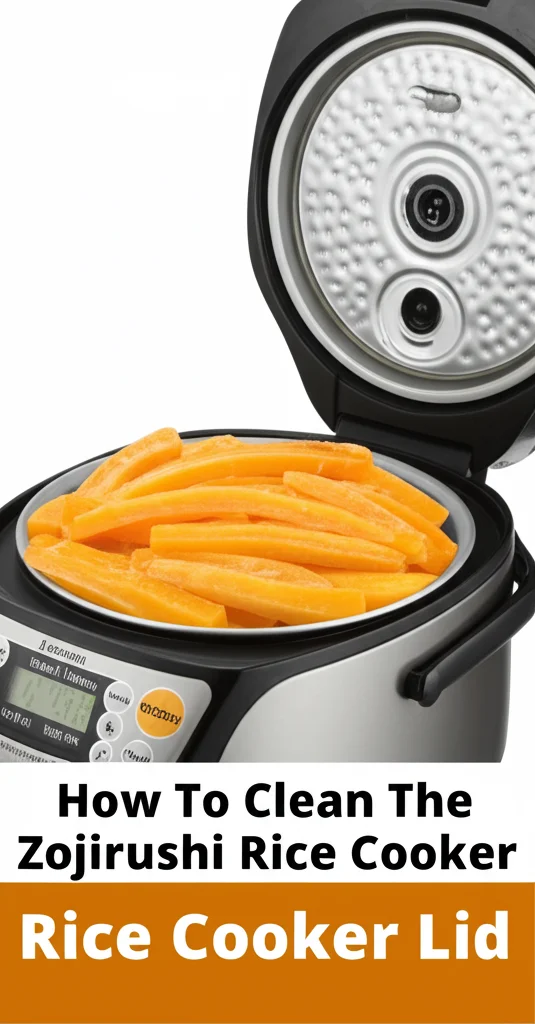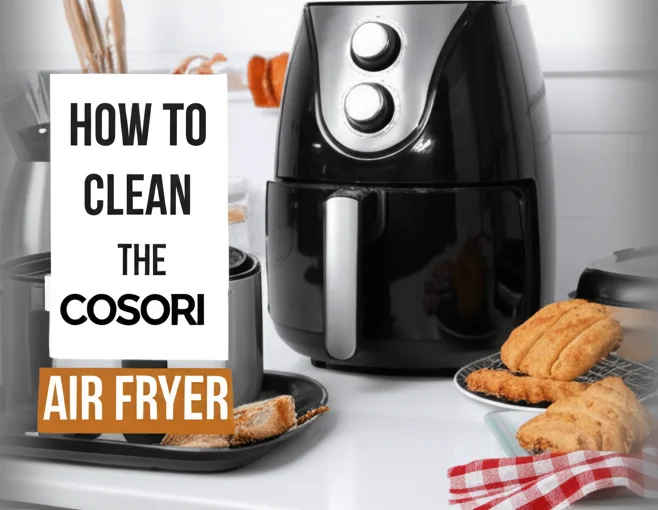· Kitchen Appliances · 6 min read
How To Clean The Zojirushi Rice Cooker Lid

Keeping Your Rice Perfect: How To Clean A Zojirushi Rice Cooker Lid
Is your Zojirushi rice cooker a kitchen workhorse? It consistently delivers fluffy, perfectly cooked rice, but have you given its lid the attention it deserves? A clean lid isn’t just about aesthetics; it’s crucial for hygiene and ensuring your rice continues to taste its best. This article will guide you through a comprehensive cleaning process for your Zojirushi rice cooker lid, covering everything from daily maintenance to tackling stubborn residue. We’ll ensure your appliance stays in top condition for years to come.
Takeaway:
- Regularly wipe down the lid after each use.
- Disassemble removable parts for a thorough cleaning.
- Use mild dish soap and warm water for most cleaning tasks.
- Address steam vent blockages promptly.
Quick Answer:
To clean a Zojirushi rice cooker lid, first unplug the cooker. Remove any detachable parts. Wash the lid and components with warm, soapy water, paying attention to the steam vent. Rinse thoroughly and dry completely before reassembling.
Why Cleaning Your Zojirushi Lid Matters
You might think the inner pot is the only part needing regular cleaning, but the lid plays a vital role. The lid collects steam, condensation, and sometimes, splatters from the cooking process. Over time, this buildup can lead to unpleasant odors and even affect the taste of your rice. Regular cleaning prevents these issues and maintains the overall hygiene of your cooking appliance. Plus, a clean lid ensures the steam vent isn’t blocked, which is essential for proper cooking function.
Daily Maintenance: A Quick Wipe-Down
After each use, a quick wipe-down can prevent significant buildup. This simple habit will save you time and effort in the long run. Grab a soft, damp cloth and gently wipe the entire surface of the lid. Pay special attention to the areas around the steam vent and any visible splatters. You can use a mild dish soap solution for extra cleaning power, but always rinse with a clean, damp cloth afterward.
Disassembling the Zojirushi Lid for Deep Cleaning
Many Zojirushi rice cooker lids have removable parts, allowing for a more thorough cleaning. Refer to your rice cooker’s manual to understand how to safely disassemble your specific model. Typically, you can remove the inner lid and the steam vent. Once disassembled, you can address each component individually, ensuring no hidden grime remains. This is especially important for the steam vent, as it’s prone to clogging.
Cleaning the Inner Lid: Removing Starch and Residue
The inner lid is where a lot of starch and residue accumulate. Fill your sink with warm water and add a small amount of mild dish soap. Submerge the inner lid and let it soak for 10-15 minutes to loosen any stuck-on food particles. Use a soft sponge or cloth to gently scrub the surface, paying attention to any stubborn areas. Avoid abrasive cleaners or scouring pads, as they can damage the surface. Rinse thoroughly with clean water and allow to air dry completely.
Tackling the Steam Vent: Preventing Blockages
The steam vent is crucial for releasing pressure during cooking. A blocked vent can affect the rice cooker’s performance and even pose a safety hazard. Inspect the steam vent regularly for any buildup. Use a small brush, like an old toothbrush, to gently remove any debris. For stubborn blockages, you can soak the steam vent in warm, soapy water or use a toothpick to carefully dislodge the obstruction. Ensure the vent is completely clear before reassembling the lid. https://beacleaner.com/how-to-clean-bathroom-floor-without-mop/ offers helpful tips on tackling hard-to-reach areas.
Dealing with Stubborn Stains and Discoloration
Sometimes, despite your best efforts, stubborn stains or discoloration may appear on the lid. For these cases, a paste of baking soda and water can be incredibly effective. Apply the paste to the stained area and let it sit for 15-20 minutes. Gently scrub with a soft cloth or sponge, then rinse thoroughly with clean water. For more persistent stains, you can try a solution of equal parts white vinegar and water, but always test it on an inconspicuous area first. Avoid using harsh chemicals like bleach, as they can damage the lid’s surface.
Drying and Reassembly: Ensuring Proper Function
Before reassembling the lid, ensure all components are completely dry. Moisture can lead to mold growth and affect the rice cooker’s performance. Use a clean, dry cloth to wipe down each part. Once dry, carefully reassemble the lid according to your rice cooker’s manual. Double-check that all parts are securely in place before using the appliance. https://beacleaner.com/how-to-clean-vinyl-plank-flooring/ highlights the importance of thorough drying after cleaning.
Frequently Asked Questions (FAQ)
Q: Can I put the Zojirushi rice cooker lid in the dishwasher?
A: While some models may have dishwasher-safe parts, it’s generally recommended to hand wash the lid to prevent damage. Always check your rice cooker’s manual for specific instructions.
Q: How often should I deep clean the Zojirushi lid?
A: A deep clean every month or two, depending on usage, is generally sufficient. Daily wipe-downs will minimize the need for frequent deep cleaning.
Q: What if the steam vent is completely blocked and I can’t remove the blockage?
A: If you’re unable to remove the blockage, contact Zojirushi customer support for assistance. Do not attempt to force anything into the vent, as this could damage the appliance.
Q: Can I use abrasive cleaners on the Zojirushi lid?
A: No, abrasive cleaners can scratch and damage the lid’s surface. Stick to mild dish soap and warm water, or a baking soda paste for stubborn stains.
Q: My lid has a lingering odor, what can I do?
A: Soak the lid in a solution of water and lemon juice for 30 minutes. Rinse thoroughly and allow to air dry. The lemon juice will help neutralize odors.
Maintaining a Clean Zojirushi: A Recipe for Delicious Rice
Cleaning your Zojirushi rice cooker lid is a simple yet essential task. By following these steps, you can ensure your appliance remains hygienic, performs optimally, and continues to deliver perfectly cooked rice for years to come. Remember, regular maintenance is key to extending the life of your kitchen appliances. Don’t let a dirty lid compromise the quality of your meals – make cleaning a priority! https://beacleaner.com/how-to-clean-hardwood-floors-with-vinegar/ provides further insights into effective cleaning solutions for your home.




